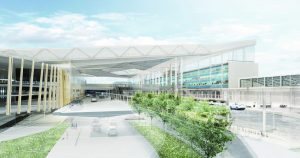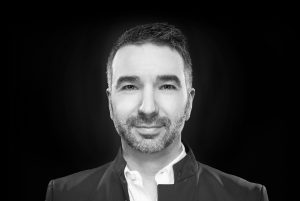- August 31, 2021
This article is part of a series on our thoughts about the future of architecture and design. We hope to inspire conversations about creating a better world for tomorrow, together.
Article by Jean-Francois Arcand
Those in design professional services like ours are often judged solely on a finished product. There is a tendency to neglect the journey and focus on the destination. Little attention is paid to the dialogue around the client relationship and the framework that ultimately establishes the experience and success of any given project. Some of my best client meetings have taken place over a coffee or a glass of wine; dreaming of the project to come, without constraints, allow us to quickly identify what is important for them. We use these informal moments to reconnect and reaffirm the reason we do what we do: to foster genuine human connection. For me, these moments are personal. Our work is shaped by passion and compassion.
In order to better understand how we can improve relationships with clients and ultimately, the quality of the spaces we design with them, we must consider where this relationship begins, persists but also how it will persist through the project. We have an opportunity to bring to light the emotions, emotional intelligence and connections that are forged in the pursuit of a common goal and mission. This state of introspective reflection can help us to become better strategic partners, continuously improve our business offering, and create tangible positive change on the built environment through design and architecture. So, how can we, as an architecture firm, foster fruitful collaboration and exceed expectations, in the case of the client relationship?
Start off on the right foot with strong leadership
The human experience has always been central to my work. More than just simple respondents, our clients are essential partners in the pursuit of projects that directly respond to their needs, surpass their expectations, and ultimately become an experience that they would want to share.
As a design and architecture firm, we want to create spaces and experiences anchored in the human experience, while also making our passion contagious for those who entrust us with carrying out the mandate for their vision. In order to achieve this, I believe it be essential to adhere to certain principles that will act as a springboard for a successful client relationship:
- Exercise and demonstrate inspiring, reassuring, and aspirational leadership from the first point of contact
- Be open and attentive to a client’s needs and objectives as people must feel heard and understood
- Be mindful of your initial promise and be sure to deliver
Three ways to manage expectations
Once a strong base is established through leadership and collaboration, our client relationship will continue to strengthen based on how true we can stay to an originally agreed upon promise. This commitment is highly dependent upon on the climate and expectations management that are put in place by the team. How can we ensure a continuous synergy between team members, on all levels?
- Confidence – Inspire trust and confidence in each decision by relating it to the original, mutually agreed upon design concept.
- Transparency – Keep clients and team members in the loop with scheduled updates and feedback.
- Communal/collective goals – Recapitulate collective goals throughout the project so that each decision or consideration has purpose.
It is important to remember: Projects rarely go as planned. Developing a strong client relationship is instrumental in guiding a client through a project’s life cycle to ensure they feel supported through a transparent and trustworthy relationship, resulting in better projects.
Celebrate milestones
 The conclusion of an architectural project represents the culmination of a colossal collective endeavor of many contributing parties. It is worth noting that an architecture project does not conclude when the construction phase begins. This a key point of differentiation for many firms in that, the way you support and nurture a relationship beyond the natural lifecycle of a project, is what propels your relationship into the realm of exceeding expectations.
The conclusion of an architectural project represents the culmination of a colossal collective endeavor of many contributing parties. It is worth noting that an architecture project does not conclude when the construction phase begins. This a key point of differentiation for many firms in that, the way you support and nurture a relationship beyond the natural lifecycle of a project, is what propels your relationship into the realm of exceeding expectations.
Beyond a post-mortem to identify key learnings and future opportunities, consider a momentous way to celebrate the noteworthy, shared endeavor that is reflective of your relationship as well as the project. People will remember the way you made them feel, namely, in unexpected moments – such as the natural conclusion of a partnership.
Create lasting connections
Having spent the last 20 years cultivating client relationships, my experience has led me to reflect on what contributes to the ideal relationship and how we can continue to build and evolve this model. The practice and the world are in a constant state of change and as such, so are connections, project complexities and overarching needs. As we continue to push boundaries in terms of projects, and we must do the same when it comes to the client relations model. As we continue to push the limits of our respective domain, we will continuously strive to leave a lasting memory of a great human and professional experience.
Click here to read When Design Disciplines Come Together, a piece that highlights the presence and importance of collaboration, teamwork and client relationships at every level of the built environment.

Jean-François Arcand has been passionately practicing architecture since 1997. From the beginning of his career, he quickly honed his expertise in planning and delivering transportation projects. His structured work approach allows him to propose innovative and sustainable solutions, that are adaptable to various contexts, interventions, and scales. Jean-François is deeply involved in all facets of the project process, thus allowing him to employ his engagement skills and human approach on many of the firm’s largest civil aviation and collective transportation infrastructure development projects.